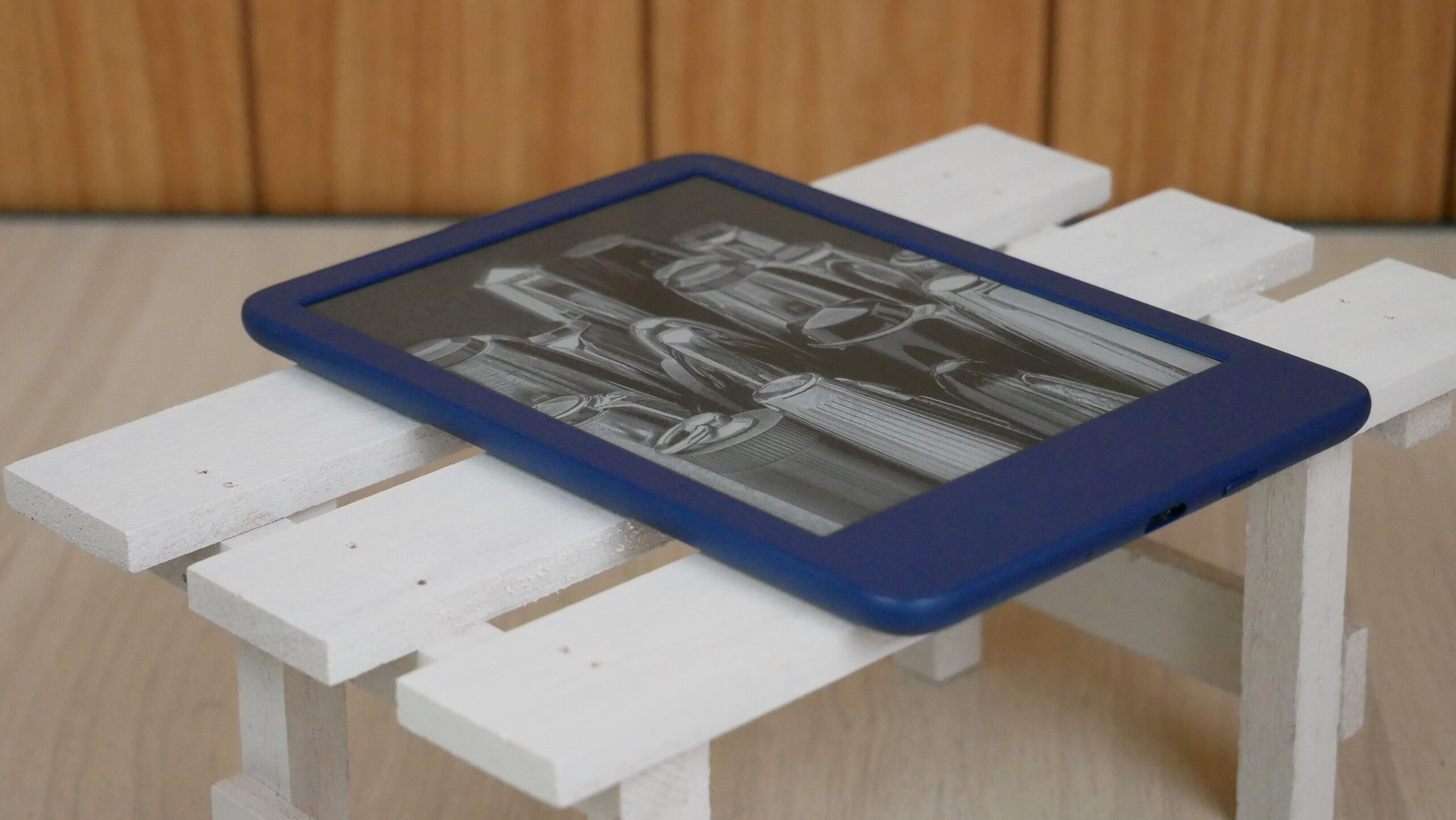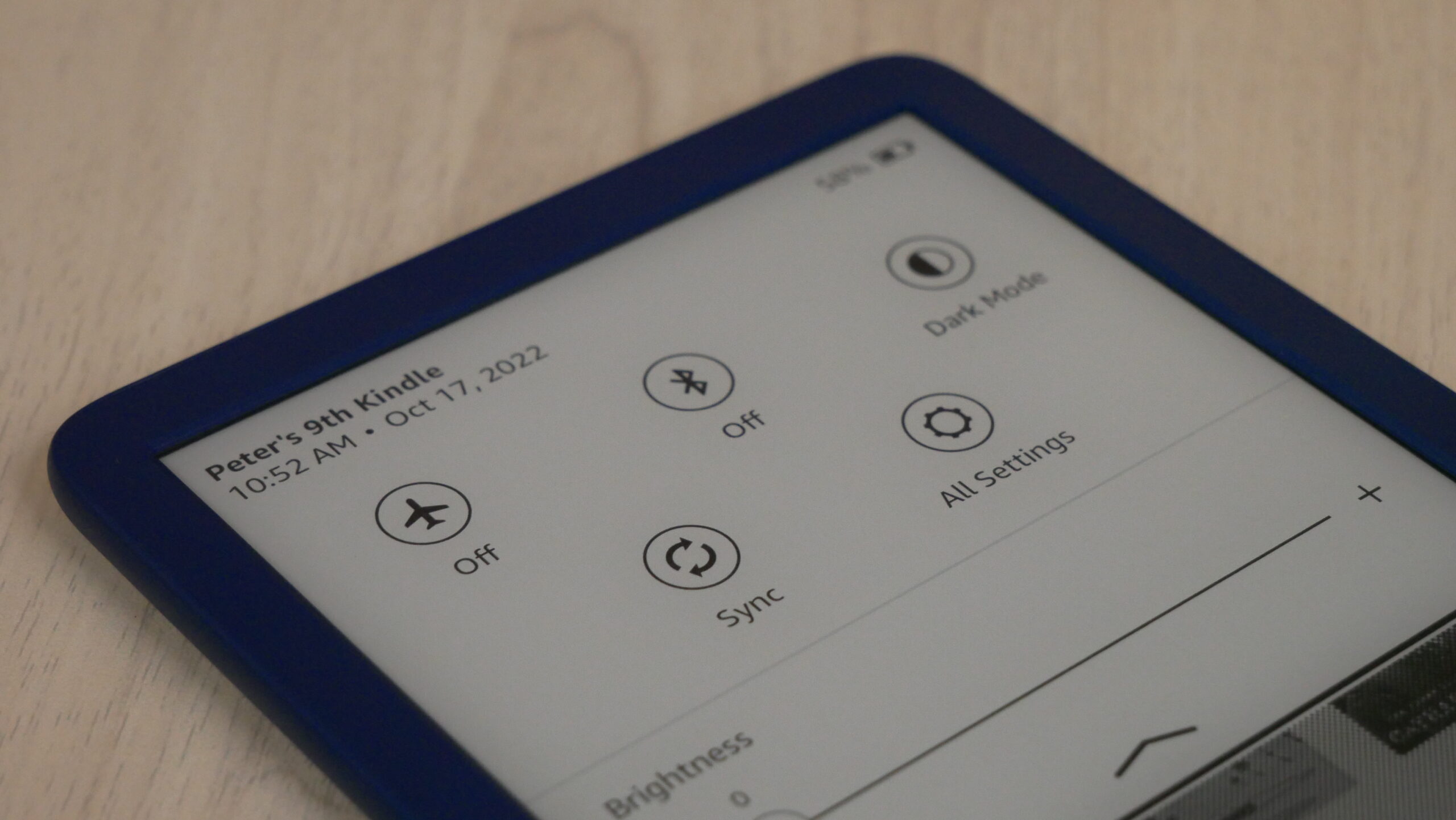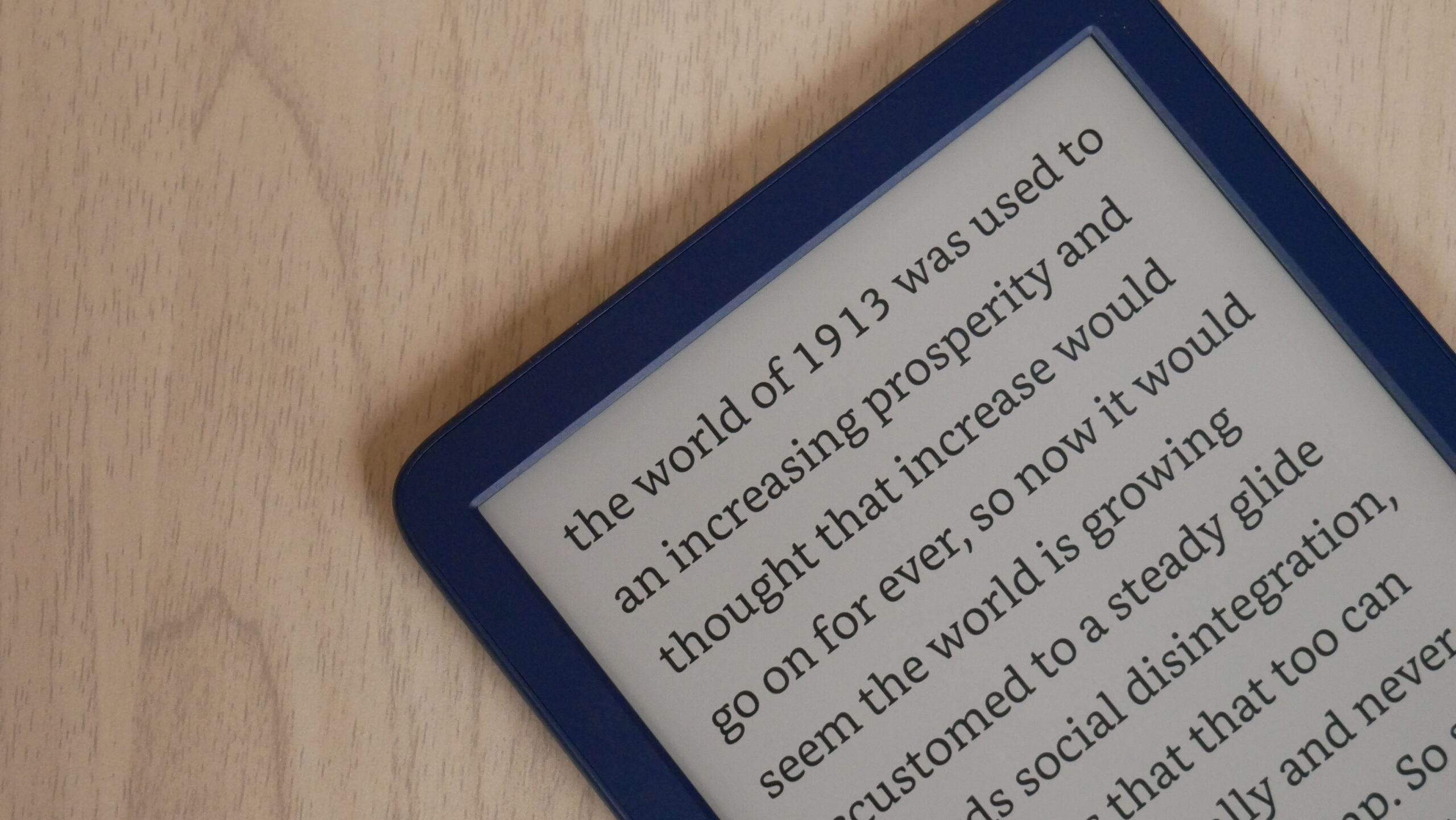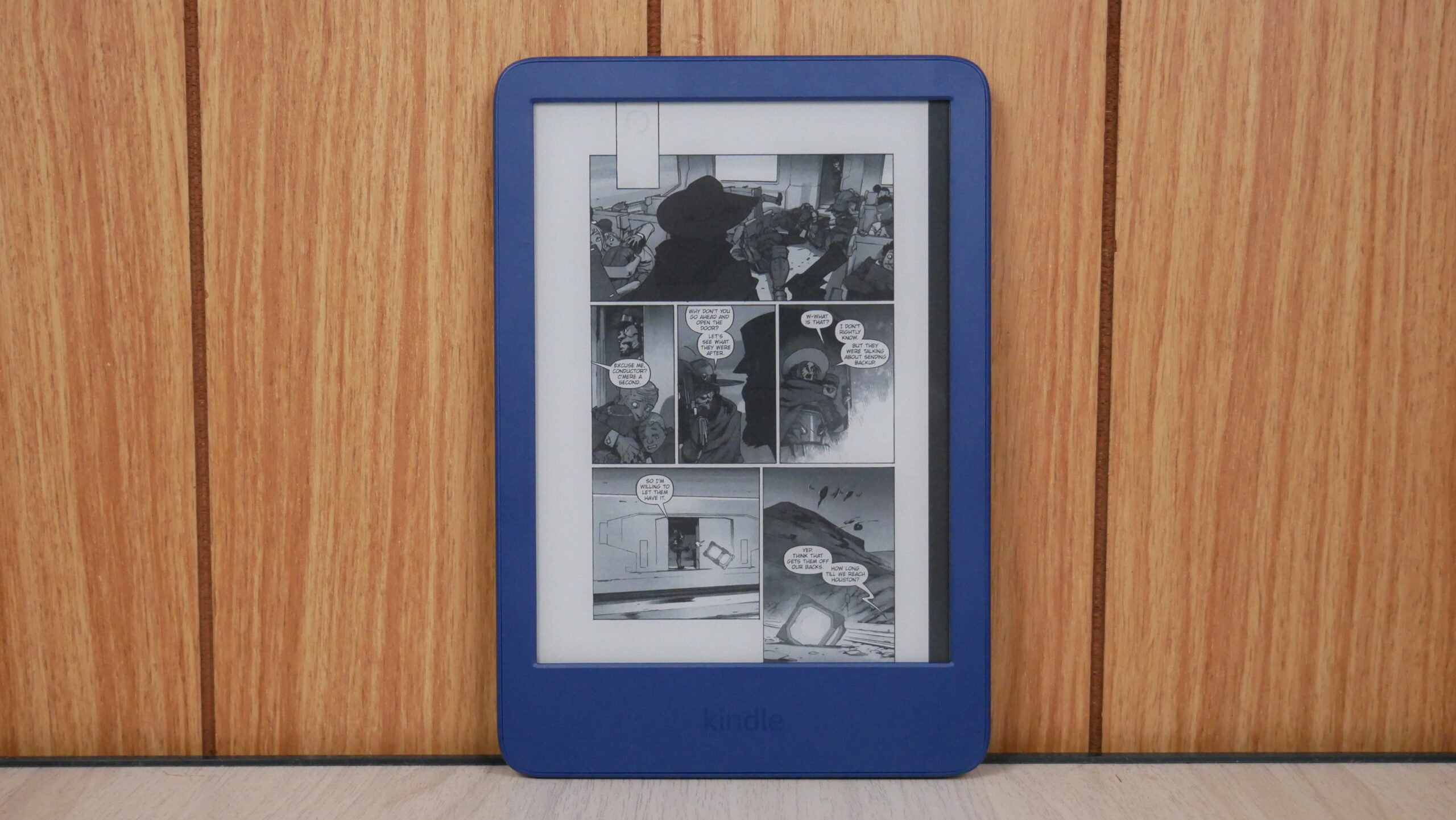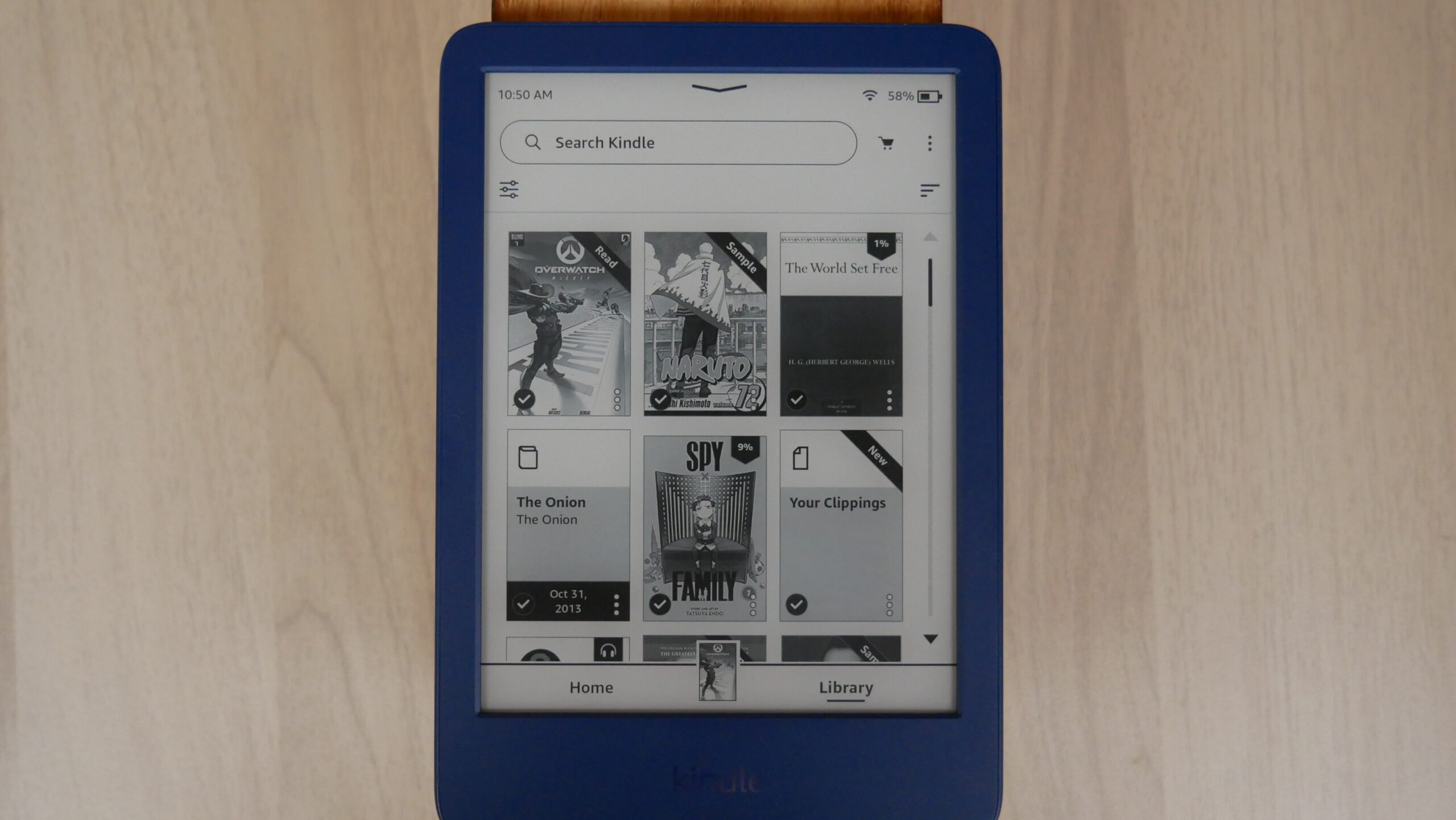The 11th Generation Amazon Kindle Basic e-Reader is their latest generation model that just started shipping out to customers. This can be considered their entry level model or their basic one. It has undergone a heavy revision from previous models and there are a number of good selling points. It finally has a new 300 PPI display, all previous models have had 167 DPI, which made made look fuzzy, now text is razer sharp. There is a new USB-C port for charging and transferring data and 16GB of storage to house all of your audiobooks, e-books, comics and manga. There is also an all-new system wide dark mode, so the colors will be inverted, the background will be black and text while, adding some contrast when reading at night.
In the past, it was hard to recommend the entry level Kindle to customers. Now, it is a no brainer. There is nothing fundamentally wrong with this 2022 variant, it now has everything you need to provide a great reading experience. I wish they improved the front-lit display, it is still using the same four white LED lights that the previous generation employed, providing somewhat uneven light distribution. This is only really relevant if you tend to read at night, but if you read during the day, it is less of an issue.
Hardware
The base model Kindle has a six inch capacitive touchscreen display with a resolution of 1448X1072 with 300 PPI. It has a sunken screen and bezel design, so fonts will look razer sharp. This is primarily due to it having exposed e-paper, so there is no layer of glass or anything else getting in the way between your eyes and the screen. When reading outdoors, the screen will not have any glare from the sun. It is packing in four white LED lights to power the front-lit display, which will allow you to read in the dark. Amazon is really promoting system side dark mode, which will invert the colors, so the background will be black and the text will be white.
Underneath the hood is a 1 GHZ single core processor, 512GB of RAM and 16GB of internal storage. It finally has a USB-C cable, so this will be used for charging the battery via wall outlet or your computer. Users will also be able to sideload in their own digital books with Windows Explorer or with a 3rd party program such as Caliber. When it comes to battery life, a single charge lasts up to six weeks, based on a half hour of reading per day with wireless off and the light setting at 13. Battery life may vary depending on use. Audible audiobook streaming over Bluetooth will reduce battery life. Users will be able to browse the internet with the Kindle Experimental Browser or buy eBooks from the Amazon bookstore and Audible audiobook store. The dimensions are 6.2” x 4.3” x 0.32” (157.8 x 108.6 x 8.0 mm). and and weighs 5.56 oz (158 g).
In terms of industrial design the six-inch screen has rounded corners and the back platting does not attract many fingerprints. If you buy the Denim one, the color is not just on the back platting, but is also on the front of the e-Reader too, so it is blue all over. I really like this color scheme better than the typically black Kindle. The power button is positioned on the very bottom, beside the USB-C port. I prefer e-readers to have them on the top, on the bottom, this is where you normally grip it and often accidently put the Kindle into sleep mode when holding it with one hand. The Kindle itself is made of 90% recycled magnesium.
The retail packaging is 100% recyclable paper and it really shows with the entire unboxing experience. The cover is vibrantly blue with the Amazon logo and a huge color picture of the Kindle. On the back of the box is some light tech specs and certifications. Inside of the box, the Kindle is protected by wax paper, instead of a plastic static proof bag. Their are two types of documentation, a quick start guide and warranty information. The USB-C port is normally held together with twist ties, however Amazon is now using a small piece of cardboard to hold it together.
The all-new Kindle, which is their entry level model, never felt this compelling. In past years it was hard to recommend it because of its paltry resolution and a small amount of internal storage. Amazon solved both of these issues. It feels like it should cost more than it does. A six-inch e-Reader is extremally portable and easily fits in your pocket. If you live in the Untied States or other major markets, you can unlock the audiobook section in the Kindle bookstore. Buy and listen to audiobooks from Audible via Bluetooth.
Software
If you are upgrading to the Amazon Kindle from an older Kindle, that hasn’t received new firmware updates in a long time, there are a few surprises when it comes to the home screen. Amazon is billing it as a new home screen experience, and it might get some getting used to. Gone are the days where the home screen is basically your library, populated with books and your own content. The navigation bar has been removed, so there are no icons with text underneath, linking to services such as the Store, Home, Library, Goodreads and settings. Now, there is a giant search bar at the top of the screen with the store icon next to it. Goodreads and other functionality have been moved to the settings menu.
Above the search bar is a drop down menu that can set your Kindle into airplane mode, which disables the WIFI, engage Dark Mode, establish a WIFI network or Bluetooth connection and access the settings menu. There really isn’t anything critical in the settings menu that you really need to be concerned about. All of your reading options, such as font-type, font size, margins and everything else are controlled in the reading part.
The main home screen primarily comprises of the last 3-4 books you have purchased or are in the process of reading, this is pretty standard fare. What I don’t really like about this is 70% of the screen is audiobook and eBook recommendations from the Kindle Store. There is a slider bar on the right side, and all you see is just Amazon trying to sell you things.
The bottom navigation bar has a link to the library and a Home button. In the middle of these two entries is cover art of the last book you currently had open, if you click on it, it just opens up automatically, which is nice. The library button is your standard Kindle library, you can sort by list or cover view and there other options to sort by books, audiobooks and documents.
The Kindle with16GB might sound like a good amount of storage, however when you unbox it for the first time and set it up, there is only 13GB available. This is because the Linux operating system takes up a lot of room. Still, this is a reasonable amount of storage if you are just going to be reading books, comics, manga and other digital content. You could feasibility buy audiobooks from the Kindle Store, but you will only be able to have 4-9 titles on your Kindle at any given time, before you run out of storage. Luckily, all of your Kindle purchases are stored on the Amazon cloud, so everything is synced there. If you have the Kindle app on your iPhone, iPad or Android phone, everything you buy on your Kindle will be viewable or listened to on those devices too.
If you are new to the Kindle experience, there a number of core features that separate it from other e-readers on the market, from companies such as Barnes and Noble or Kobo.
The Amazon Kindle and Fire tablets have a feature called X-Ray. It gives you a rundown of the people, places and things in a digital book that is purchased from Amazon. If you are reading autobiographies with lots of images, there is also an X-Ray function to look at all of the images in the book. One of the things that most readers find compelling, are all of the characters in the book. X-Ray breaks down all of the major and minor characters, how many times they have been referenced and you can jump immediately to the page of the book. This not only works with characters, but also places and images.
X-Ray is a reference tool, that was first introduced in September 2011, and was incorporated in the Amazon Kindle Touch and later models, Kindle Fire tablets, Kindle apps for mobile platforms, Fire Phones, and Fire TVs. General reference information is preloaded into a small file on the Kindle device or app, so that when the feature is used, there is no need to access the Internet to access such content as dictionary, encyclopedic, or metadata entries.
Normally X-Ray is enabled on all books that Amazon sells in their digital bookstore and you can check ahead of time on the Amazon site when you’re browsing books for those that support X-Ray. On the detail page for a book, scroll down to the Product Details section. Next to X-Ray, look for Enabled.
There are a few caveats with X-Ray, they do not work with sideloaded books. This includes books you copy over with a file manager or 3rd party apps such as Calibre. Send to Kindle for Chrome, PC, MAC and Kindle apps for Android and iOS also do not work with X-Ray.
One of the biggest strengths of X-Ray is gaining a greater understanding of complex books. It also is tremendously relevant when reading a series with a ton of different books and make references to hundreds of names and places. If you take a break from reading and jump back to it a couple of months later, it is easy to get lost. I found this to be a lifesaver with the Wheel of Time series or Brandon Sandersons Stormlight.
There is also some great social media functionality in the form of Good Reads. This is social media gathering place for people to talk about books, create reading lists and chat with authors. If you share your Kindle with other people you can lock out certain aspects, such as the store, web-browser or access to the cloud. It is also possible to install different keyboards. In addition, there are vocabulary builders, Word Wise and many other features.
Reading and Listening
The Kindle Store is likely the best digital bookstore in the world, they have the most content, when compared to Barnes and Noble Nook, Kobo or the Google Bookstore. This is likely due to them having far more relationships with publishers. You will find all of the latest bestsellers, timeless classics and also comics, magazines, manga, newspapers. You can search or click on titles you are interested in and download free samples to the library. There is also a buy it now button, basically the book description page looks very similar to the page on the Amazon website, including user reviews.
Audiobooks are a big draw, Audible is the most successful company in this space and have been around the longest. In select markets users will have another tab next to the bookstore, that says audiobooks. You can buy and listen to them right on the Kindle with the accompanied audiobook player. This is not fully featured as their main client for the Audible app for Android or iOS, but you can adjust the volume, playback speed, jump ahead to chapters, access the table of contents and even stop the audiobook from playing, after a certain timeframe, useful for people who like to fall asleep, while listening. It says at the very bottom what Bluetooth device is connected and you can even make a bookmark.
I like the feature where you can jump ahead or back 30 seconds. Really useful if you are leaving an audiobook playing, while run outside for a few minutes or take the trash to the curb, and can just jump back a minute or two and catch up with what you missed.
The all-new Kindle was designed for all of your book purchases to be made from Amazon. You can read eBooks in Kindle Format 8 (AZW3), Kindle (AZW), TXT, PDF, unprotected MOBI, PRC natively; HTML DOC, DOCX, JPEG, GIF, PNG, PMP through conversion; Audible audio format (AAX). The Paperwhite also supports EPUB, but you can only load these on your Kindle with the Send to Kindle apps. It works on the Kindle app for Android and iOS, in addition to the Chrome browser extension, Send to Kindle by Email and the Send to Kindle for PC/MAC. When you send an EPUB to your Kindle, it stealthy converts it to an AZW file and this is what you would read. The Kindle does not read the EPUB format, so if you load it in via Calibre/Windows Explorer, the file won’t be readable.
When you first start reading a book, you will notice a profile section of the reading app. Here is where you can name the user and establish your favorite reading parameter’s. This is useful if you share your Kindle with other members of your family, but if you are a solo reader, you don’t really need to set this up.
The Kindle lacks the page turn animation system that the Paperwhite 5 employs. This is a relatively new page turn engine that seamlessly blend pages, when flipping the page to another. Some people really like the transitionary process, but in truth, I am not a big fan. I often find animations on E INK e-paper devices a bit disjointing.
However, the Kindle is really solid at reading manga. This is because the manga files are in Amazons own format and not simply a replica PDF file. This ensures that manga will fill up the entire screen and everything will be displayed edge to edge. Comics aren’t that great on this base model, since it is not using an E INK Carta 1200 display that the Paperwhite 5 employs.
Wrap Up
Amazon’s done a tremendous job of improving on all of the base Kindle’s weaknesses while adding extra perks that make it even easier to read books outside of the Amazon ecosystem. This includes new support for using Send to Kindle to deliver EPUB files to your reader. As long as you don’t need a waterproof e-Reader you can enjoy in the bath or a larger screen, the entry-level model offers good value for your money.
(adsbygoogle = window.adsbygoogle || []).push({});
The post Review of the Amazon Kindle 11th Gen e-Reader first appeared on Good e-Reader.

